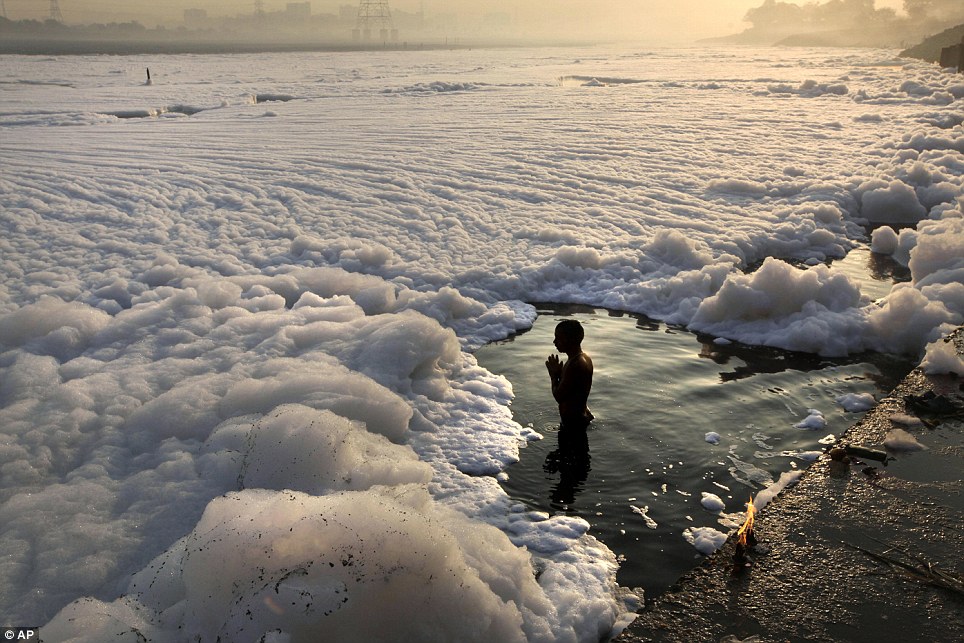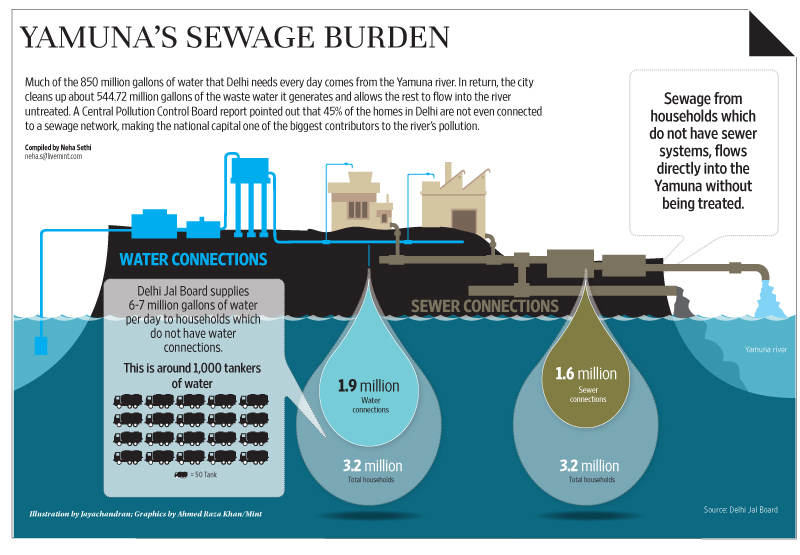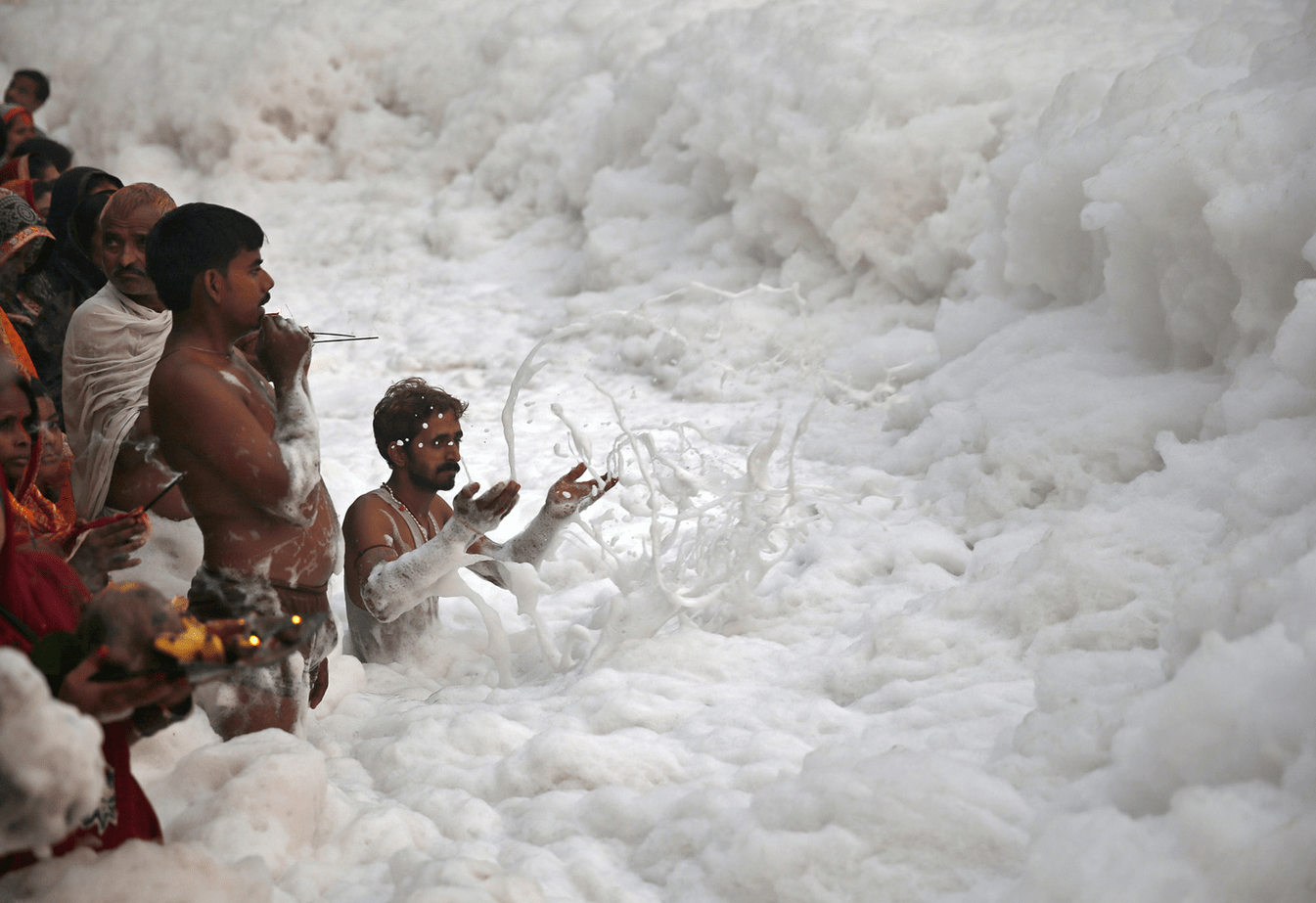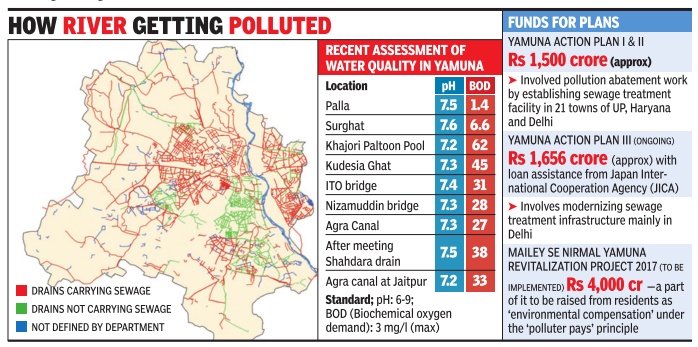It has been ages since India has been “trying” to clean up Yamuna!
23 years have passed since the Yamuna Action Plan (YAP) was implemented in 1993 with a soft loan of 700 crore INR from Japan.. 13 years since the Supreme Court gave an all-out warning to the Indian government – Clean up Yamuna by 2005..
USD 500 million dollars later,
Yamuna is now worse than a sewage drain!
The river Yamuna, being one of the longest rivers in India (along with the Ganges and Indus) passes through Uttarakhand, Haryana, Delhi, and Uttar Pradesh, was the lifeline for the people of the area.
But today it is the most polluted river of the country. A sea of foam directly affecting the lives and livelihood of people dependent on it. Ironically, Yamuna is the source of 70 per cent of Delhi’s drinking water!
Despite becoming a breeding ground for diseases, this holy relic is still held at the place of honor! Up until 1909, it was so clean, that the water was supposed to carry cleansing properties. But today, people from all walks of life come to its banks and take dips that is supposed to wash away their sins, and possibly take away diseases due to sludge and dirty foam that has become a permanent addition to the river!

DUMPING GROUND FOR WASTE, INDUSTRIAL SLUDGE & PESTICIDES
The exploitation of the Yamuna has only deteriorated its value over the years. An assessment of cultural, social, geographical and economic significance was looked upon to get clear results on the level of pollution of the Yamuna.
There are about 30 cities, 70 towns, and many small villages located along the banks of the river Yamuna, out of which over a billion litres of the populations’ sewage passes into the river each day. About 260 million litres of industrial untreated wastewater is discharged by hundreds of factories into the river! Other major pollution inputs include runoff from more than 6 million tonnes of chemical fertilisers and 9,000 tonnes of pesticides applied annually within the basin.

Along a stretch, Yamuna is choked by water hyacinth which leads to eutrophication, affecting all the other water creatures and plants.
The river stays stagnant for 9 months out of a year, thus becoming an open breeding ground for mosquitos and other parasites.
Surprisingly, though Delhi constitutes only 2% of the catchment area, it is responsible for 80% of the pollution of the river. The capital generates 1,900 million litres (500,000,000 US gal) per day (MLD) of sewage.

Industrial activities around the area have negatively impacted the many rivers surrounded around the areas. Although industries contribute majorly to the growth of a country’s growth (in this case India’s), the activities have only deteriorate the level of development. The economy may see an increase in its GDP, but not in the index of development such as a better, cleaner economy with proper living standard and sanitation system.
SACRED RIVER OR POISONOUS DRAIN?
Apart from the fact that we have virtually turned a sacred river into a drain, the consequences of this extreme case of water pollution are dire.
Yamuna is now emitting hazardous fumes that are not only affecting the health of people who are living, travelling or religiously dipping in it, it is actually corroding the Delhi metro itself! It seems like the river has actually turned into poison!

The fumes of ammonia and hydrogen sulphide, also known as sewage gas, increase corrosion of the condenser joints coatings, AC compressors and causes leakage of coolant gases in the coaches of Delhi Metro. It is also behind the numerous gas leaks from the ACs of the people living around.
Moreover, the health hazards caused by these fumes are many and varied. Ammonia fumes cause respiratory disorders, breathing disorders, and can lead to permanent lung failure, whereas hydrogen sulphide causes gastrointestinal disorders, headache, asthma and bronchitis. A steep rise in levels of arsenic in Yamuna has been reported that can cause skin cancer and other dermatological problems. There has also been an increase in mercury levels of the river, thus exposing people to life threatening diseases such as kidney failure, cancer, weakening of immune system, even resulting in fetal deaths post 20 weeks of pregnancy.
A BLEAK FUTURE
Lets put this in perspective.
We are living in a melting world, which is already under imminent threat of global warming that can and will easily wipe us out! There is a dearth of fresh water everywhere in the world. The increasingly melting glaciers will sooner or later run out.
In September 2016, China blocked one of the tributaries of Brahmaputra river in Tibet. Tamil Nadu and Karnataka have been fighting their own water war over the fate of river Cauvery since British era. Its not hard to imagine what will happen once the most basic necessity of human survival – fresh water, becomes a scarce entity.
Most of the rivers in India are polluted in the plains because of run-off from agricultural land, discharge of industrial effluents, domestic sewage, soil erosion and dumping of plastic and glass materials (used bottles) by the people. The water of these rivers is not fit for drinking near cities and industrial areas.
But Yamuna, so far, has been the worse affected. In fact, now there are whole parts of river that have been termed ‘dead river’ where the pollution is extremely high, making it impossible for marine life to survive.
The Indian government has been trying to install a centralised sewage treatment system to tackle and treat sewage and industrial waste before it is released into the river. But due to lack of funds and ill-equipped power supply, hardly any plan has been successful. The project required 24-hour power supply, but only an 8-hour supply was available.
Over Rs 2000 crore INR have been spent in various initiatives and action plans to clean up this ‘holy’ drain..em..river, but the results have been negligent. Whats more, according to recent plans, it is going to cost another 6,000 crore INR (USD 900 million) to clean it up!

Is there something that WE can DO??
YES.
Until and unless we, the citizens, do our part in managing this situation and the government comes up with strict strategies and policies towards cleaning-up operations, Yamuna’s condition will continue to worsen to a point where living around the area will be impossible, driving people away and leaving the banks to barren out for good.
- First and foremost, treatment of industrial effluents is very essential before dumping into the river. Industries should take the mantle and lead the way by ensuring waste treatment in their plants.
- Reusing scientifically recycled waste to construct new roads, buildings etc. Government should strive to create facilities where this process can be undertaken, that will, in turn, decrease the influx of waste in rivers. Singapore recycles 98 % of its construction and demolition waste. There is no reason why we can not do something similar.
- No new construction of new barrages, roads, metro and railway bridges, embankments near Yamuna should be allowed.
Last but not the least, it is high time now the Government took necessary steps to raise public awareness on how to decrease water pollution by taking certain measures in their everyday lives.
- Avoid wasting water unnecessarily. This reduces the amount of contaminated water that needs treatment.
- DO NOT throw junk down your sink or toilet such as paints, oils or other forms of litter.
- Just because it disappears, doesn’t mean it goes away.
- Whenever possible, opt for environment friendly household products, such as washing powder, household cleaning agents and toiletries.
- Plant & plant & plant trees until you can’t plant anymore! All of it comes down to this. The more trees we plant, the better future we will be leaving for our future generations.
- DO NOT LITTER. It is that simple. Don’t throw litter into rivers, lakes or oceans. Help clean up any litter you see on beaches or in rivers and lakes, make sure it is safe to collect the litter and put it in a nearby dustbin.

The time is upon us. It is our responsibility, our country and our future. The damage that we have done to the nature around us is going to comeback to us in the end, affecting not just our lives, but our children’s as well. Lets vow to leave for them a better future.
Like and share to support the cause! Make sure to pen down your thoughts in the comments below!
- Click to share on X (Opens in new window) X
- Click to share on Facebook (Opens in new window) Facebook
- Click to share on Reddit (Opens in new window) Reddit
- Click to share on Tumblr (Opens in new window) Tumblr
- Click to share on Pinterest (Opens in new window) Pinterest
- Click to share on WhatsApp (Opens in new window) WhatsApp
